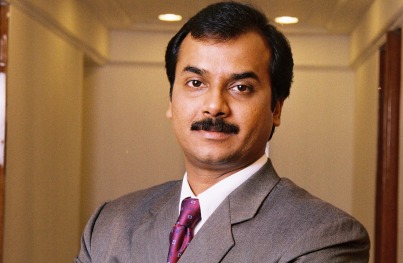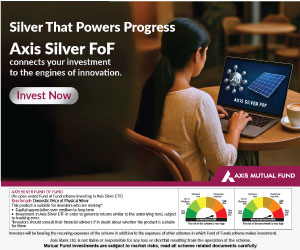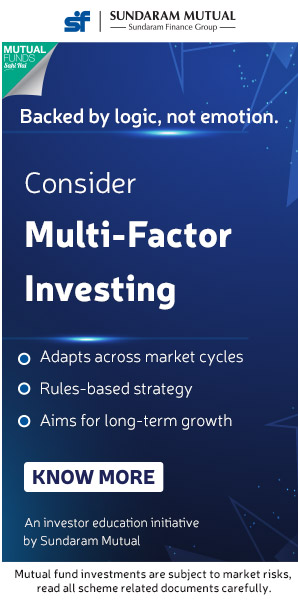DSP BlackRock DYNAMIC ASSET ALLOCATION FUND should be the core part of investors portfolio!
BFSI Industry Interview

Ajit Menon is the Executive Vice President, Heads Sales and Co-Head Marketing of DSP Blackrock Mutual Fund. In an interview on the occasion of launch of DSP BlackRock Dynamic Asset Allocation Fund, Ajit shared his thoughts with Advisorkhoj on why Asset allocation is so important and why it should be the core part of investor’s portfolio.
First, let me congratulate you for launching DSP BlackRock Dynamic Asset allocation Fund. Can you please explain how it is different from other existing asset allocation schemes?
Asset allocation funds are a relatively small product category in the Indian mutual fund space. There are a limited number of schemes with most of them not having sizeable assets under management. The key factor that differentiates DSP BlackRock Dynamic Asset Allocation Fund (DSPBR DAAF) from most of these other schemes is that DSPBR DAAF looks at the valuations of both equity and debt markets and decides which of the two asset classes is relatively more attractive. Most other asset allocation funds in the market look at the valuations of equity markets only (for example, through a P/E ratio) to decide upon the equity allocation and the remaining money is invested into debt by default. On the other hand, if DSPBR DAAF invests in debt, it would be because debt is more attractive as compared to equity – thus the decision to invest in debt is not by default, but by design.
It claims to eliminate confusion and hesitation from investors minds and allows them to invest peacefully. Do you think this could be a GameChanger in terms of easing out the process of selecting funds?
DSP BR DAAF should be the core part of investor’s portfolio. Not only would it will remain relevant today, this strategy will remain appropriate during any market cycle. It has a built-in advice so it takes emotions out of investments. We would ask investors to invest and stay invested for more than two to three years and let the product perform through different cycles. This product also removes questions from the mind of investors on where should one put their money, which fund to buy, when to buy and how to buy.
Asset allocation is something which retail investors in India do not understand much. If you explain it simply please, what is asset allocation and why it is so important?
Any investor who has spent reasonable time in the stock market would know that no one asset class will generate the best returns at all times. There are times when investing in the equity market may mean better returns than investing in the debt market, or vice versa. Having invested in the right asset class or the right balance of the two could have a huge bearing on whether or not an investor is able to create wealth for the long term. This is where an asset allocation based approach trumps a piecemeal approach. A piecemeal approach means the picking and choosing of schemes without a clear objective in mind, which is how a lot of MF investments occur.
One must ensure that investments reflect the right balance at all times. Hence, if there is a sharp price rise in an asset class which alters its share in your portfolio, you may need to take measures to restore the balance.
Where would the scheme primarily invest to get exposure in equity and debt?
The Scheme would be investing primarily in DSP BlackRock Top 100 Equity Fund and DSP BlackRock Equity Fund to get equity exposure and DSP BlackRock Strategic Bond Fund and DSP BlackRock Short Term Fund to get debt exposure.
The Scheme has provision to invest in other specified equity and debt scheme of DSP BlackRock Mutual Fund
How 'Dynamic' is your "DSP BlackRock Dynamic Asset allocation Fund"? Can you explain the investing process which makes it dynamic?
The scheme has an active approach of achieving tactical asset allocation based on the relative attractiveness of equity and debt markets. The automatic rebalancing of portfolios not only aims for better returns but also seeks to limit downside for investors during market downturns. The scheme uses the Yield Gap metric to assess market valuations. In essence, the scheme would be suitable for investors looking at long-term wealth creation.
The factor that would be used for determining the asset allocation is the Yield Gap ratio, which is the ratio of debt market yield to equity market yield. 10Y G-Sec yield is used as the proxy for debt market yield, while earnings yield of equity markets is simply the reciprocal of the Nifty Price/Earnings ratio. By evaluating the ratio of these two yields, one can assess whether equity markets are overpriced or under priced relative to debt markets. The model also considers the Modified Yield Gap ratio, which uses 1Y G-Sec yield in the numerator.
The model of the scheme currently suggests a 10% equity allocation (based on allocation band of the modified yield gap ratio), whereas the 'pundits' in the market suggests that we have just entered into a long term bull run. How, you are going to counter that?
Even most of the bullish investors face the same dilemma as regular investors and that is to answer the question – When to make their entry in the equity markets? As a result, most investors keep waiting for the right moment and tend to delay their decision making. Hence, we think this product is suitable for even the bullish investor, who is of the opinion that markets are set for a long term bull run as the product takes emotions out of investing and aims to ensure that you enter equity markets at right valuations.
We have back-tested the model of the scheme over a period of 13 years, and have come across the following key findings:
- The model has the ability to ramp up its equity allocation quickly over a short period of time. For eg: In the year 2001, The model had suggested a movement from 10% equity allocation to 70% equity allocation over a period of six months. Hence if the earnings of the equity markets improve over the next few months, the model is nimble enough to capture this and will accordingly suggest a higher equity allocation.
- We have tested the model over various market phases and we have observed that over long term bull runs, the model is able to participate in much of the upside of the equity market. In bear phases and range bound phases, the model is able to perform much better than equity markets by protecting the downside significantly.
Being a Fund-of-Funds scheme what would be the taxation structure?
All Fund-of-Funds schemes in the Indian mutual fund industry are subject to debt taxation (non-equity). However, investors who stay invested in the product for over one year can avail of indexation benefits to minimize their tax liability.
Why should an Investor consider this scheme? Can you give us three quick points?
- Dynamic and automatic allocation towards the right proportion of asset classes
- Automatic rebalancing of portfolios to not only aim for better returns but also to limit downside for investors during market downturns
- Makes investing a peaceful process by addressing common investor concerns like what, when and how much to invest
Recent Interviews
Fund News
-
Mr. Navneet Munot's 'Person of the Year 2025'
Dec 31, 2025 by HDFC Mutual Fund
-
Zerodha Mutual Fund launches Zerodha Nifty Short Duration G Sec Index Fund
Dec 26, 2025 by Advisorkhoj Team
-
Groww Mutual Fund launches Groww Nifty Chemicals ETF
Dec 26, 2025 by Advisorkhoj Team
-
DSP Mutual Fund launches DSP Nifty Next 50 ETF
Dec 19, 2025 by Advisorkhoj Team
-
DSP Mutual Fund launches DSP Nifty 500 Index Fund
Dec 19, 2025 by Advisorkhoj Team






